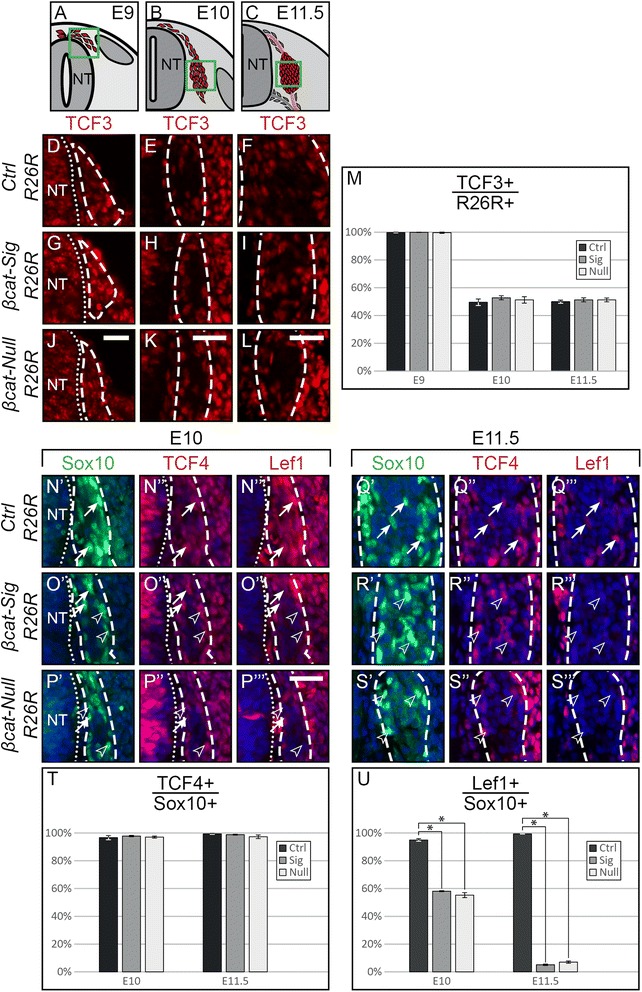Figure 6.

Expression of TCF3, TCF4, and Lef1 in the developing DRG. (A-C) Illustration of a transverse section at E9, E10 and E11.5, respectively, displaying cells which contribute to the DRG in red. Green box represents caption area for subfigures D-L, and N-S respectively. (D-L) Immunohistochemistry for TCF3 shows decreased TCF3 expression in control and mutant animals at E10 and E11.5 as compared to the situation at E9, as verified by quantification (M). Dashed lines frame in vivo fate-mapped cells. (N-S) Triple immunohistochemistry for Sox10, TCF4 and Lef1. (N’-S’, N”-S”, N”’-S”’), single fluorescence channels of the same sections. (T) Quantification of TCF4 presence in Sox10-positive cells shows continuous expression in DRG cells and no difference between any of the three animals at both E10 and E11.5. (U) Quantification of Sox10- and Lef1-double positive cells shows reduced numbers in both mutants at E10 and a complete loss at E11.5. Dashed lines frame the outer border of cells which express Sox10 and thus roughly encompass the DRG area. Arrows point to cells expressing Sox10, TCF4 and Lef1. Arrow heads point to Sox10- and TCF4-positive, Lef1-negative cells. NT, neural tube; Scale bars: 25 μm. DRG, dorsal root ganglia; E, embryonic day.
